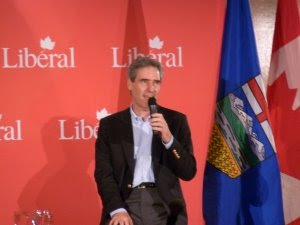The threat of proposed school closures in inner city Edmonton has once again riled opposition MLAs into a frenzy on the floor of the Legislative Assembly. Declining student enrollment has led to Edmonton Public School Board to propose the closure of 11 inner city schools in January 2010 (Delton, Eastwood, John A. McDougall, McCauley, Norwood, Parkdale, Spruce Avenue, Capilano, Fulton Place, Gold Bar and Hardisty). It is difficult not to sympathize with the pleas of these MLAs’ constituents, but each time that an opposition MLA rises to demand an answer from the Minister of Education about these closures the issue gets more muddied.
For the purpose of this blog post, I am going to ignore the politically charged and conspiracy driven accusations of opposition MLAs and focus on specific comments from two Edmonton MLAs:
Edmonton-Highlands-Norwood MLA Brian Mason:
“many schools in the inner city are in danger of being forced to close as the number of schools in Edmonton’s suburbs expand.”
The proposed school closures have very little to do with the provincial government or the Department of Education and more to do with how our cities have grown over the past forty years. Edmonton’s Public School Trustees are ultimately responsible for the fate of these schools and the reality is that young families are not moving into the inner city in the numbers needed to keep these schools operating. They are moving to the suburbs and to the outlying municipalities in the Capital region, which have experienced unbridled urban sprawl in recent decades. The reality is that there is a market demand for single-dwelling residential properties (contributed to by both cost and the desire to have a detached home with a yard).
Having grown up in one of Edmonton’s outlying communities, I can testify that it was a great environment to be raised. As someone who has lived in the urban core since moving to Edmonton, I know that there are some areas that I would not want to raise my children. This said, continued urban sprawl is not a solution to Edmonton’s growth challenges. The further our city sprawls, the more expensive it will be to provide the kind of services that are idealized. Urban sprawl is unsustainable.
Edmonton-Gold Bar MLA Hugh MacDonald:
“If the city of Edmonton increases population density in the central neighbourhoods as planned, we will need the student spaces now being considered for closure.”
Inner city communities, like Alberta Avenue, have taken exceptional steps to challenge stereotypes and create more family friendly environment in their neighbourhoods. New residential and commercial development in downtown Edmonton as well as the development of the City Centre Airport lands over the next 20 to 30 years could create an inner city renaissance that could breath new life into Edmonton’s inner city schools.
If Edmonton’s urban core does witness a population density increase that attracts more young families, it is very likely that these school buildings, could be available to be reopened. As far as I am aware, it is undetermined what would be done with these proposed closed schools. Kevin Kuchinski has written a blog post on the potential usages for these schools if closed.
Well-funded special interests like the Katz Group have been focusing their energies on convincing Edmontonians that the urban core would be revitalized through the public funding of a new arena. A new arena could have some economic benefits to the downtown core, but it does not address the larges societal issues facing the core or how our cities are growing. If urban sprawl is unsustainable, what are our municipal leaders doing to create an inner city that is friendly and welcoming to young families? Urban sprawl is the root cause of the school closures decision facing our elected School Board Trustees.
When School Trustee and City Council candidates start knocking on doors before the October 18, 2010 elections, Edmontonians who care about the future of our inner city neighbourhoods should remember that the school closures are not the result of a nefarious political agenda, but a result of how we have let our city to grow.




